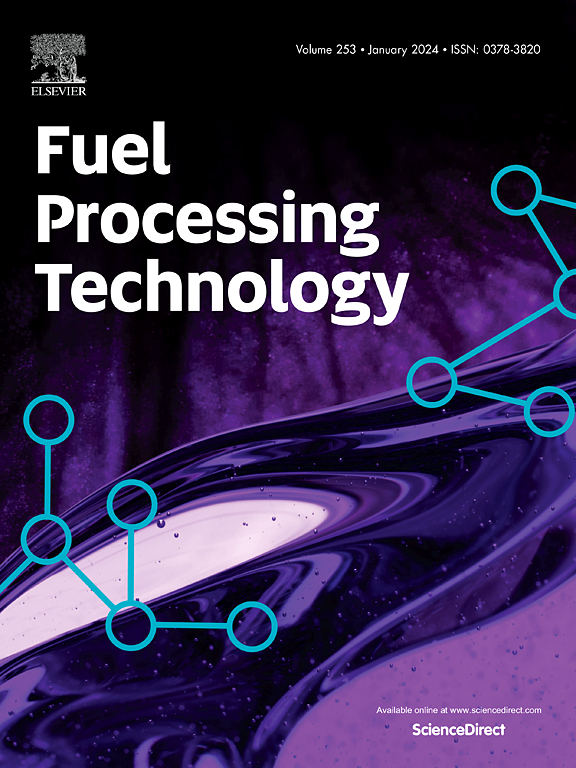气化对捣固焦和顶充焦原位热强度的影响:孔隙结构、碳结构和断裂机制
IF 7.7
2区 工程技术
Q1 CHEMISTRY, APPLIED
引用次数: 0
摘要
夯实焦化技术以其资源效率和经济效益受到炼铁行业的广泛关注。但其在高炉条件下的适应性存在争议,限制了其广泛应用。以往对捣固焦炭的研究主要集中在其冷机械强度、反应活性和反应后强度上,而对其气化后原位热强度的降解机理以及在相同条件下与顶充焦炭的性能差异的研究尚不深入。通过裂解试验,模拟高炉温度和气氛,比较气化后的捣焦和顶充焦的热拉伸强度。结果表明:在1200℃温度下,顶充焦炭强度急剧下降,而夯充焦炭强度保持在51.3%以上;气化增强了焦炭的各向异性,破坏了孔隙结构,后者是强度降低的主要因素。断裂分析揭示了两种破坏模式:脆性过载断裂和缺陷诱发断裂,缺陷诱发断裂更为普遍。夯实焦结构缺陷少,气化损伤轻,热强度高。该研究为评价焦炭在实际高炉条件下的性能提供了新的见解,并支持了夯实焦炭的工业应用。本文章由计算机程序翻译,如有差异,请以英文原文为准。
Impact of gasification on in-situ thermal strength of tamping coke and top-charging coke: Pore structure, carbon structure, and fracture mechanisms
Tamping coking technology has garnered attention in the ironmaking industry due to its resource efficiency and economic benefits. However, its adaptability under blast furnace conditions remains controversial, limiting its widespread application. Previous studies on tamping coke primarily focused on its cold mechanical strength, reactivity, and post-reaction strength, yet the degradation mechanisms of its in-situ thermal strength after gasification and its performance differences compared to top-charging coke under identical conditions remain underexplored. This study simulates blast furnace temperature and atmosphere to compare the thermal tensile strength of gasified tamping coke and top-charging coke via splitting tests. Results indicate that the strength of top-charging coke sharply declines at 1200 °C, while tamping coke retains 51.3 % higher strength. Gasification enhances coke anisotropy and disrupts pore structures, the latter being the primary factor for strength reduction. Fracture analysis reveals two failure modes: brittle overload fracture and defect-induced fracture, with the latter being more prevalent. Tamping coke exhibits fewer structural defects and milder gasification-induced damage, contributing to its superior thermal strength. This study provides new insights for evaluating coke performance under practical blast furnace conditions and supports the industrial adoption of tamping coke.
求助全文
通过发布文献求助,成功后即可免费获取论文全文。
去求助
来源期刊

Fuel Processing Technology
工程技术-工程:化工
CiteScore
13.20
自引率
9.30%
发文量
398
审稿时长
26 days
期刊介绍:
Fuel Processing Technology (FPT) deals with the scientific and technological aspects of converting fossil and renewable resources to clean fuels, value-added chemicals, fuel-related advanced carbon materials and by-products. In addition to the traditional non-nuclear fossil fuels, biomass and wastes, papers on the integration of renewables such as solar and wind energy and energy storage into the fuel processing processes, as well as papers on the production and conversion of non-carbon-containing fuels such as hydrogen and ammonia, are also welcome. While chemical conversion is emphasized, papers on advanced physical conversion processes are also considered for publication in FPT. Papers on the fundamental aspects of fuel structure and properties will also be considered.
 求助内容:
求助内容: 应助结果提醒方式:
应助结果提醒方式:


